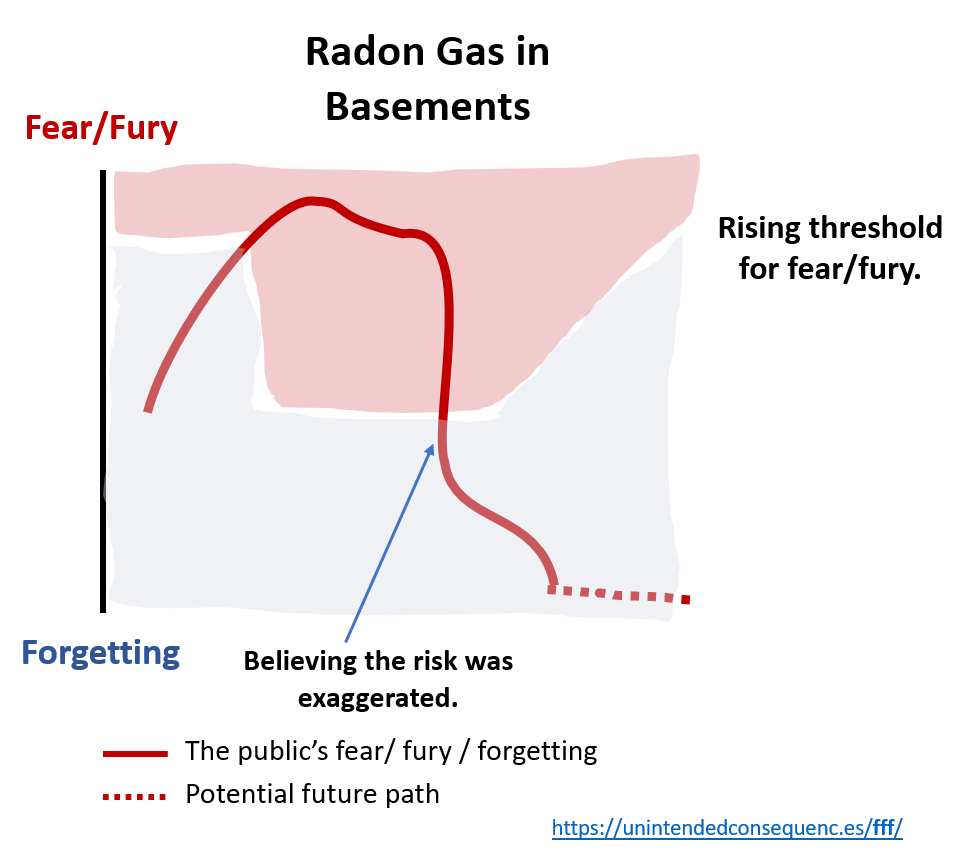Change often doesn’t happen smoothly, but rather in fits and starts.
Here’s a look at some mass actions over the past few decades that either caused fear or fury and (for some of them) how they were ultimately forgotten.
Since we’ve seen a year of fear and fury around the world, largely in the form of many types of large sustained protests and the impact of COVID-19, let’s look at some past examples and how change plays out (or doesn’t). What behavior and consequences emerge along the way?
Radon Gas. In the 1980s a report from the EPA and its reporting in media set off a radon gas scare in the US. The gas, naturally occurring in the ground, seeped into home basements and was blamed for cancer deaths. People suddenly became afraid to spend much time in their basements. But the risk was exaggerated in importance.
Radon gas as a cause of cancer is highly tied to smoking. Given that smoking has declined in the US over the last few decades before the recent creation of vaping, is radon really an issue? An EPA report estimates that 21,000 die of lung cancer caused by radon but 86% of them are also smokers.
With more knowledge, the fear dissipated like the gas itself.
